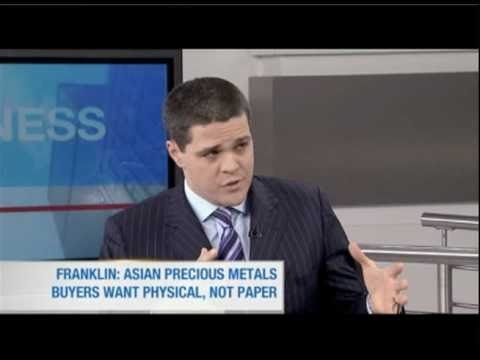Reasons To Own Silver Sprott Asset Management
Post on: 2 Апрель, 2015 No Comment

1. With gold rapidly re-establishing itself in its true historic role as money, silver is once again coming to the fore as “poor man’s gold”
As investment demand for gold inexorably rises due to the relentless debasement of all fiat paper currency, its price will rise to levels that will make it the private preserve of central bankers, sovereign wealth funds, large institutions and wealthy individuals. As a result of this phenomenon, the general public will increasingly switch its focus to silver as a refuge from paper money excesses and the impact on the silver price will be dramatic.
2. Unlike gold, silver has many industrial and medical applications which absorb a significant proportion of both new mine supply and recovered scrap
Investors seeking to position themselves in physical silver will be in direct competition with the traditional consumers and this development alone will have a salutary impact on silver prices.
3. Silver is a remarkably small market to begin with and a heavy inflow of new capital into the sector will consequently have an outsized impact on price
Silver’s overall market size is miniscule with annual total supply from all sources estimated to be little more than one billion ounces. When compared to the gold market, which is small in its own right, annual availability of silver from all sources has a dollar value of roughly 15% of that of gold. In addition, some 70% of silver supply goes to its traditional demand sources (industrial, medical, jewelry) while the vast proportion of gold is available for investment demand.
4. The inventories of above-ground silver have shrunk to minuscule levels over the past 50 years
Above-ground silver inventories were estimated to be as high as ten billion ounces at the end of the 1950’s with the vast proportion being held in the U.S. and China. In the succeeding fifty years, nearly 90% of this stockpile has disappeared, attesting to silver’s chronic supply-demand imbalance. To put it in context, the remaining roughly one billion ounces in inventory today is worth approximately U.S. $20 billion, while the U.S. Federal Reserve is creating $65 billion a month out of thin air to conduct its quantitative easing program.
5. Silver’s industrial and medical applications are growing rapidly
Complicating investor’s desires to own more silver is the rapid growth in silver’s non-investment sources of demand. Silver may be the most versatile of all metals and among its many attributes are:
a. It is one of the best conductors of electricity.
b. It is the second best reflector of light behind rhodium, but at a fraction of the cost.
c. It is a biocide and has proven very effective in killing germs.
Thus, not surprisingly, its demand is exploding in such diverse fields as modern electronics, solar panels and numerous medical applications. In many of its varied uses, it is difficult to find a cost-effective substitute and because its usage in many instances constitutes a small proportion of the total cost of the product, its demand is relatively price inelastic.
It is interesting to note that photographic demand used to constitute nearly 33% of non-investment demand but that has virtually disappeared due to the wide adoption of digital photography and has been easily replaced by the new applications. In addition, there was a high recycling aspect to the photographic use which is largely absent in today’s dynamic new uses.
6. Increased mine supply will not be a solution to accommodate rising demand
A very significant proportion of mine supply is a by-product of base metal production as there are remarkably few pure silver mines in the world. Given the world’s precarious economic and financial situation, there is a high probability of economic dislocation which would severely cripple base metal demand and may lead to mine closures. That would have a significant impact on silver supply. In addition, Peru and Mexico are the world’s leading silver producers, accounting for over one-third of world production and geopolitical conditions are deteriorating alarmingly in both countries, most particularly Peru.
7. There has been a significant change in the large and important Chinese market
For many years, China was known to have large above-ground inventories in conjunction with considerable mine production (by a large margin, it is the world’s third largest producer behind Mexico and Peru). Accordingly, it was a substantial exporter of silver and was instrumental in contributing to the uneconomically low silver prices in past years. However, recently, their exports have slowed to a trickle and Chinese investment demand for silver has accelerated to such an extent that China has actually imported silver. Given the country’s vast population, its growing wealth and its welladvertised dissatisfaction with the status of the U.S. dollar of which it is the major holder, Chinese interest in silver can’t be underestimated.
8. India, the world’s second most populous country, has dramatically increased its silver imports in recent years, culminating in record high imports in 2013.
The increase in Indian imports is not terribly surprising, given the country’s predilection for precious metals and its growing affluence. However, unlike China which is a significant producer, India has to import the vast bulk of its requirements and, accordingly, its impact on the tiny silver market is considerable. This became even more evident in 2013 when the Indians increased their imports to record levels in response to the government’s relentless campaign to limit gold imports.
9. The silver price has been subjected to considerable manipulation through the years on Comex and other paper-based exchanges
The silver price has been subjected to a well-documented price suppression scheme for twenty years. By virtue of massive paper shorting by a group of powerful bullion banks, the tiny silver market has been abused and the price rise to date, although substantial, has not come close to reflecting the virtual disappearance of above-ground inventory, the dramatic tightening in the supplydemand equation and the increasing difficulty in acquiring physical silver.
One major bullion bank J.P. Morgan Chase has been identified as a major miscreant in a number of recently filed class action lawsuits. The current outstanding paper short position on the Comex alone vastly exceeds the physical silver available on that exchange. In addition, silver’s total short position in relation to the amount of annual production is so far out of line with that of other commodities, including gold, that it can only be termed ridiculous.

10. There has been a proliferation of paper silver products that soak up investor demand but do not have the physical silver backing that is alleged
There have been a number of paper silver products issued in recent years, many of which are sponsored by the very same bullion banks accused of malfeasance in the paper silver market. A close examination of the prospectuses indicates that there is considerable leeway with respect to the actual silver backing and that the price can thus be replicated by derivatives and other paper machinations. As the public becomes more aware of this and their financial vulnerability in such vehicles, they will redirect their money away from such products into physical silver or items such as Sprott Physical Silver Trust, which is backed by documented, fully-allocated silver. Given the extreme tightness of the physical silver market, this will have a considerable impact on price.
11. The U.S. Commodity Futures Trading Commission (C.F.T.C.) abandoned its five year probe into alleged silver price irregularities despite overwhelming evidence of malfeasance
This shocking but not surprising result for all intents and purposes confirmed the U.S. government’s role in the long term suppression of the silver price. It must be remembered that one of the C.F.T.C. commissioners Bart Chilton had stated publicly that
“silver markets have been subjected to repeated attempts to influence prices. There have been fraudulent efforts to persuade and obviously control that price. Any such violation of the law in this regard should be prosecuted.”
Not surprisingly, in the aftermath of the decision to end the probe, Mr. Chilton left the C.F.T.C. One must also not forget the explosive information introduced at a C.F.T.C. hearing in March, 2010 by Andrew Maguire, a veteran silver trader. Maguire provided chapter and verse on the whole sordid manipulation, including a precise prediction that subsequently unfolded exactly as advertised. However, since J.P. Morgan Chase, which has long been acknowledged as the U.S. Federal Reserve’s bank, played the dominant role in the entire silver price suppression saga, it should come as no great surprise that the C.F.T.C. which is a U.S. government regulatory agency, didn’t find sufficient reason to pursue the investigation to its rightful conclusion. The good news emanating from this is that the ongoing aggressive price suppression ensures a price explosion in silver when the robust physical market for silver finally overcomes the paper market manipulation.
12. Silver is considerably underpriced
It must not be forgotten that silver traded at $50 per oz. 34 years ago when the Hunt brothers attempted a market corner. This price was nearly reached again in April 2011 before a vicious paper raid conducted during a quiet market period drove the price sharply lower. The price has remained under severe pressure ever since enduring systematic shorting and numerous flash crashes in the paper market. At the current price in the neighborhood of $20 per oz. it is severely undervalued when one just takes into consideration the single fact that most pure stand-alone silver mines can’t extract an ounce of silver from the ground for less than a total cost of $25 per oz. at the present time.
13. The gold-silver ratio has varied widely through the years, but has declined in the past to the range of 10 or 15 to 1 in extended precious metals bull markets
The ratio of the gold price to the silver price, which is currently in the neighborhood of 50:1 and has been dramatically higher when silver was in its extended bear market in the 80’s and 90’s, often declines precipitously in extended precious metals bull markets to as low as 10 or 15:1. Given that we are currently in a powerful bull market with many years to run and in view of the aforementioned compelling reasons to own silver, a ratio in that range certainly seems attainable before this bull breathes its last. It is worth noting that the ratio of 15:1 correlates very closely with the ratio of gold to silver thought to exist in the earth’s crust.
Conclusion
With the ongoing debasement of all fiat paper currency essentially assured by the magnitude of the debt problems overwhelming the entire world, the prices of gold and silver can only rise when denominated in these currencies in the future. In that event, a decline in the gold-silver price ratio to the low end of the historical range promises future percentage price gains in silver that will comfortably exceed those already achieved off the lows of the late 90’s. If that comes to pass, silver will qualify as one of the great investments in financial history.














